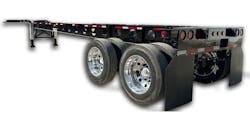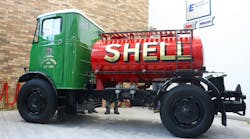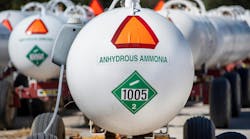OVER THE past three years, significant increases in storage tank capacity were added worldwide for crude oil and refined petroleum products. Still more new storage capacity is coming on line through 2011.
All of this suggests that the storage terminal industry could be on the verge of becoming overbuilt in some areas, according to Andrew Lipow, Lipow Oil Associates LLC. He discussed the outlook during a presentation entitled ”Oil Market Trends and Their Impact on Terminals” that was given during the International Liquid Terminals Association's 30th Annual International Operating Conference held May 24-26 in Houston, Texas.
“During the 2007 to 2009 period, operators added around 150 million barrels of crude oil storage and 160 million barrels of refined product storage worldwide,” he said. “We've got another 55 million barrels of storage coming online through 2011. It looks like storage capacity is becoming saturated in some areas.”
China accounted for a significant amount of the crude oil storage capacity added over the past three years. More than 90 million barrels of crude storage and 20 million barrels of refined product tank capacity were added in China during that period to meet growing demand for refined fuels in that country.
“That doesn't even include expanded tankage for China's strategic petroleum reserve,” Lipow said. “China built 119 million barrels of crude oil storage in the first phase of its strategic petroleum reserve program, and another 170 million barrels is coming in the second phase.”
US storage growth
US companies added nearly 40 million barrels of crude oil storage and more than 40 million barrels of refined product tankage over the past three years. Companies operating in Singapore added 27 million barrels of petroleum storage, India added 37 million barrels of tank capacity, and 14 million barrels of new capacity was built in the Arabian Gulf.
“We saw new storage tank construction around the world for both crude oil and refined product storage,” Lipow said. “However, that is just a part what has been a significant increase in petroleum storage capacity. This includes what can be called alternative storage capabilities, all of which are competing with tradition storage terminals.”
Some of the new capacity came in the form of one-time fills for new pipelines in North America. This includes nine million barrels for the TransCanada Keystone pipeline and another nine million barrels combined for the Enbridge Southern Access and Southern Lights pipelines.
Refinery closures added a lot of new tankage all at once and created significant competitive pressure for existing storage terminal operators. Lipow cited seven refinery closures that created nearly a billion barrels of new terminal capacity over the past three years. Those refineries were in North America, the Caribbean, the United Kingdom, and Europe.
Marine tanker ships factored into the alternative storage mix for refined products in recent years. Lipow called the ships “storage tanks with propellers and steering wheels” and said nearly 100 million barrels of distilled product was held in ships around the world at the peak of the economic slowdown.
“Oil demand slowed at the same time the worldwide fleet of petroleum tankers was growing,” he said. “More than 60 new VLCCs (very large crude carriers) were delivered in 2009. Charter rates fell to as low as 30 cents a barrel last year, which meant ship rates were very competitive against land-based storage.”
Multiple limited partnerships that own and manage pipeline and terminaling operations are expanding into trading and marketing, which is driving storage tank construction for many of these companies. At the same time, trading and marketing operations are diversifying into terminaling.
“Lines of business are blurring, and a lot more storage capacity is coming on line,” Lipow said. “On the crude oil side, we are also seeing more storage capacity being built in specific trading locations, such as Cushing, Oklahoma.”
Other crude oil trading centers are in Houston, Texas; New York, New York; the Arabian Gulf; and Singapore. Traders have built significant crude oil handling infrastructure in all of the locations.
The Cushing building boom started in 2006, when a perception of impending supply shortage put the crude oil market into backwardation, a financial term meaning an inverted yield curve. Traders simultaneously bought oil and sold futures forward. Some estimates indicated that a premium of $10-$20 per barrel was added to spot price of oil as a result of this. Traders hoping for a big payday started putting large inventories into storage — both ocean- and land-based.
In the years that followed, the industry added 25 million to 30 million barrels of crude oil storage. Total capacity in the area today is above 50 million barrels.
“Is Cushing overbuilt at this point?” Lipow asked. “That's the real question. Increasing oil demand and rising prices will put an end to the contango factors (the situation where, and the amount by which, the price of a commodity for future delivery is higher than the spot price, or a far future delivery price higher than a nearer future delivery) that led to the stockpiling of supplies.”
Alternative fuels
He also reviewed future US storage needs for alternative fuels, specifically ethanol and biodiesel. Federal renewable fuel standards (RFS) play a critical role in demand for ethanol and biodiesel.
Current RFS levels call for 13.8 billion gallons of ethanol a year to achieve a nationwide 10% blend level with gasoline. Biodiesel producers must turn out 650 million gallons of to meet the federal RFS mandate.
Ethanol storage capacity ranges from 44 million barrels to 49 million barrels and includes tankage at ethanol plants, petroleum terminals, gasoline refineries, and rail tankcars. The rail fleet totals 30,000 tankcars, each with a 700-barrel capacity.
Storage is less of a concern for the biodiesel sector, which Lipow called an industry in crisis. “Production capacity for the industry totals approximately a billion gallons, but the RFS mandate is well below that,” he said. “Most biodiesel plants are running at 10% to 15% capacity right now.” ♦








